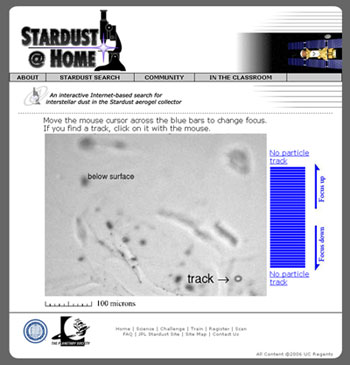To check that the volunteers do a good job of identifying particles, Westphal and his team put into the data stream images of tracks that they already know about. “That way we can measure the detection efficiency of individual volunteers and of all our volunteers together. We found that people were very good at identifying tracks, and it’s even better when you combine the efforts of multiple people. We’ve identified over 100 tracks, and almost all of these were found by amateurs.”

The analysis is slow and painstaking. It took around eight years after the collector returned to Earth for a preliminary analysis of the mission’s progress was completed. Of those hundred or so particles, most are from the comet, and only seven are candidate interstellar dust grains.
“We’ve had a first look at the samples to see what is there,” says Westphal, “but not necessarily to do any science. We need to characterize the samples well enough that future scientists can make requests in an intelligent way for samples that address interesting science questions.”
